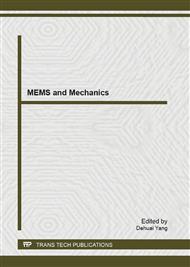p.442
p.448
p.454
p.459
p.463
p.468
p.474
p.483
p.487
Insight in the Performance of Scramjet Combustor Based on Orthogonal Experimental Design
Abstract:
A numerical insight was accomplished to optimize the scramjet combustor configuration based on orthogonal experimental design. Parametric modeling of combustor configurations was performed by the orthogonal array with 13 factors at 3 levels. Numerical simulations were proceeded by k-ε standard turbulence model and eddy-dissipation model in the combustion process. The performance indexes of combustion efficiency, total pressure recovery coefficient and thrust gain coefficient were evaluated. Detailed comparison with the effect of the factors on the performance was also carried out to demonstrate the main factors and determine the optimal configuration. The analysis of the extreme differences of the factors indicates that the main factors affecting combustion efficiency were the length of the wedge, the length depth ratio of the cavity, the depth of the cavity, and the length of the expanding section; The main factors affecting total pressure recovery coefficient are the angle of the primary combustor, the length of the expanding section, and the thickness of the strut; The main factors affecting thrust gain coefficient are the thickness of the strut, the length of the expanding section, and the angle of the secondary combustor. Validation of the optimal configuration is then confirmed that its performance is higher than the rest of the configurations, with the combustion efficiency of 0.915 and the total pressure recovery coefficient of 0.486, which are 31.5% and 65.9% higher than the experimental results, respectively.
Info:
Periodical:
Pages:
463-467
Citation:
Online since:
June 2013
Authors:
Price:
Сopyright:
© 2013 Trans Tech Publications Ltd. All Rights Reserved
Share:
Citation:


